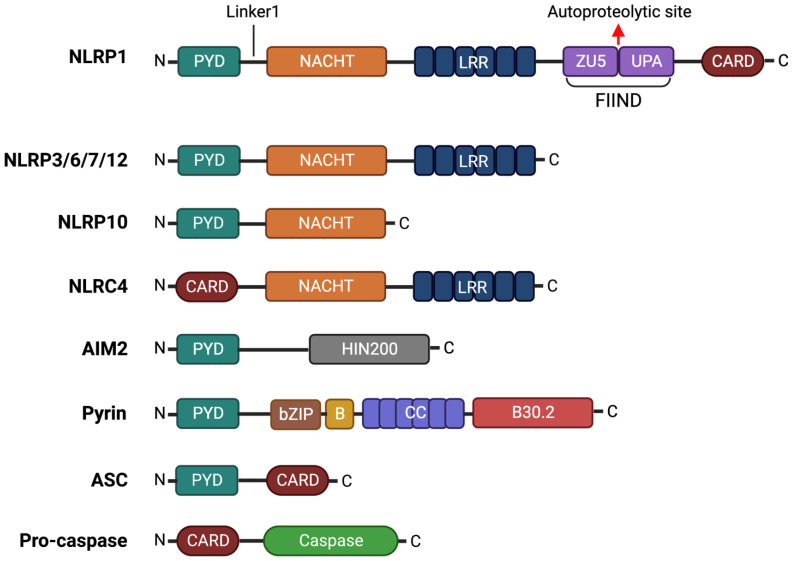Figure 1.
Domain organization of common inflammasome component proteins. NLRP1, NLRP3, NLRP6, NLRP7, NLRP10, NLRP12 and NLRC4 belong to the nucleotide-binding domain and leucine-rich repeat-containing receptor (NLR) protein family, which typically contains a central nucleotide-binding and oligomerization domain (NACHT) domain, an N-terminal Pyrin domain (PYD) domain and a C-terminal leucine-rich repeats (LRR) domain. NLRP1, NLRP10 and NLRC4 deviate from this typical NLR structure. In addition to the common structure, NLRP1 contains a C-terminal function-to-find domain (FIIND) and caspase recruitment domain (CARD), while NLRP10 lacks the LRR domain. The NLRC4 does not have the N-terminal PYD domain but, instead, has an N-terminal CARD domain. AIM2 belongs to the AIM2-like receptor (ALR) protein family and comprises an N-terminal PYD domain and a C-terminal HIN200 domain. Finally, Pyrin consists of an N-terminal PYD domain, a bZIP, B box, coiled-coil and an N-terminal B30.2 domain. Apoptosis-associated speck-like protein containing CARD (ASC) acts as an adaptor protein, consisting of a PYD and CARD, which connects the inflammasome sensor to pro-caspase through PYD and CARD interactions, respectively.

